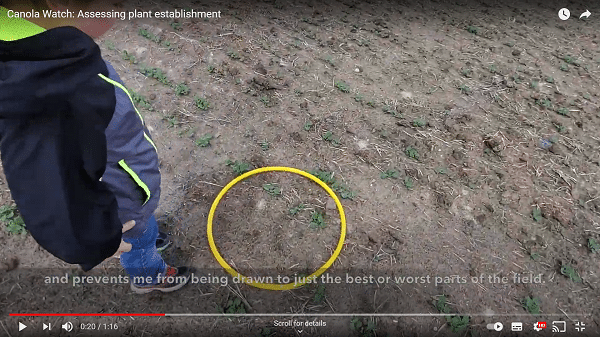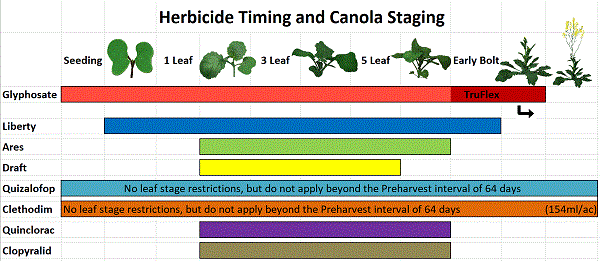
Now is the time for counting canola
When it comes to scouting for plant establishment, sometimes later is better. Scouting at the two- to four-leaf stage can give you a better idea of actual establishment if emergence is slow/variable or the field experiences early season plant loss. This is where CanolaCounts.ca can come in handy. It’s a mobile-ready tool designed to help producers understand plant densities and emergence across their fields and see how they compare to regional norms. Plant establishment assessments will identify seeding deficiencies and formulate solutions to those problems going forward. Check out the above video and this article for some how-tos on scouting for plant establishment.
Before you spray, read these
This is the time of year when canola growers may be considering their second (or possibly first) in-crop herbicide application. However, timing is everything: herbicides vary in effectiveness depending on the crop growth stage, as shown by these research results. The above graphic lists several popular herbicides registered for canola and the crop growth stages their labels recommend for peak performance. More information can be found here. Canola producers across the Prairies are also spraying in a wide gamut of conditions. This article offers key tips for spraying in hot conditions (28C and above), cold conditions and everything in between. Finally, follow the label when spraying — it’s important for both agronomic and market access reasons. Visit Keep it Clean for more information.
Spray and clean, rinse and repeat
Canola producers who do not clean out their sprayers — including the tank, plumbing and nozzles with the recommended product procedures — are taking a big risk because they’re likely leaving potentially harmful herbicide residue in the sprayer. For example, pre-seed burnoffs ahead of cereal crops may include Group 2, Group 4 and Group 14 products that can damage your canola. Even worse, if wind or rain delays spraying, the concentration of accumulated herbicide residue in the tank, plumbing and boom ends can continue to increase. Check herbicide labels to make sure of the cleaning solutions required; in many cases it may require ammonia and water but you may need to use a detergent in some circumstances. This article includes sprayer clean-out tips that can help you avoid a wreck.
Flea beetles: the fight continues
Although some regions of the Prairies are winning the battle against the notorious flea beetle, there are still a lot of “hot spots” — often literal — where the pest continues to flourish and wreak havoc on vulnerable canola crops. Depending on your scouting results, it may be time for an insecticide application. This article focuses on applying insecticides and herbicides in hot weather. Flea beetle tips and info (scroll down) features several links to resources that can help you build on your flea beetle management strategy. Checking plant establishment for CanolaCounts.ca also offers producers the opportunity to reassess flea beetle damage at the same time. Check out the research behind the recommendations here.

